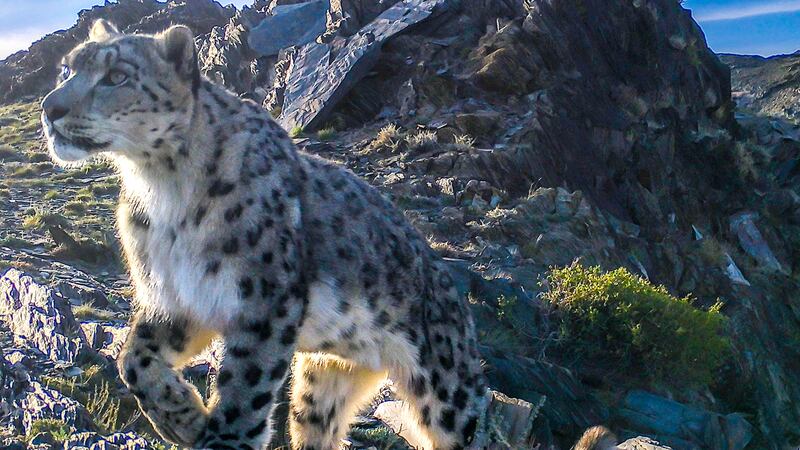More than three-quarters of snow leopard habitat spanning at least 12 countries is under-researched, according to analysis.
The WWF report reviewed more than 100 years of snow leopard research, revealing gaps in the knowledge of the threatened big cat, which could be hampering its conservation.
According to the study, 77% of the snow leopard’s vast range – expected to be more than 1.7 million km squared of rugged mountain terrain – has never been researched.
The wildlife charity found that of the 23% covered by some form of research, less than 3% has benefited from robust scientific methods to estimate snow leopard populations.
This includes things like camera traps and genetic studies.
According to the report, despite a growth in research in the past few decades, much of the work is concentrated in four areas in India, Nepal and Mongolia.
There could be as few as 4,000 snow leopards left in Asia’s high mountains and the remaining population faces familiar and emerging threats.
Experts say increased habitat loss and degradation, poaching and conflict with communities have contributed to a decline in numbers and left the species hanging by a thread in many places.
Although conservationists are addressing several of the threats, a robust analysis of how effective the interventions are remains scarce, the report said.
Becci May, senior programme adviser (Asia) at WWF-UK, said: “With their legendary ability to blend in with their surroundings, snow leopards are often referred to as the ‘ghost of the mountains’.
“Despite increasing attention being paid to their conservation, snow leopards are threatened by habitat deterioration, poaching and conflict with people, with climate change adding further pressure.
“Areas inhabited by snow leopards often overlap with local communities who depend on the same land for their own food and livelihoods and are central to the conservation of snow leopards and their habitats.
“This new report will help guide the conservation community to prioritise areas of research that will better inform efforts to protect the species and its home.”
Rishi Kumar Sharma, WWF global snow leopard leader, and lead author of the report, said: “The elusive snow leopard lives in rugged terrain – some of the harshest landscapes on the planet – so research poses significant logistical challenges.
“We need to build a more accurate picture of the status of snow leopard populations and establish baselines and indicators for both snow leopards and their prey species so that range states can better assess future changes and evaluate the impact of conservation actions.
“But more than anything else, we need a much better understanding of what the people sharing space with snow leopards think.”
The report said: “We recommend areas of snow leopard research that require increased investment and focus to ensure that snow leopard conservation is informed by adequate knowledge of a diverse array of conservation problems, is evidence-based and can meet the challenges of reconciling the needs of people and wildlife in the high mountains of Central and South Asia.”
The authors also noted a number of limitations, including that they only examined peer-reviewed English language journal publications, so a large quantity of non-English or unpublished information was excluded.
They said several authors in snow leopard range countries – predominantly China, Russia, Kyrgyzstan, Uzbekistan and Kazakhstan – publish in Chinese and Russian language journals which have not been included in the review.








